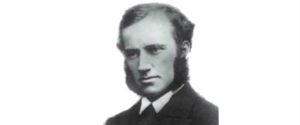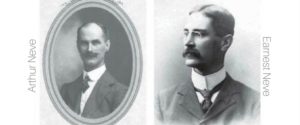Kashmir’s health sector story under the treacherous Dogra regime became fabled when the ‘selfless’ Imperial British doctors arrived, served and left a lasting legacy in Vale.
When the ruthless Dogra monarch incited his oppressed subjects to drive out English doctor-couple from Srinagar in 1864, the message was loud and clear: No foreign healing for enslaved Kashmiris, then battling multiple epidemics.
That couple was Mr. and Mrs. Clark, the two medical Christian missionaries who had arrived in April 1864, when the valley was under the constant attack of the deadly diseases like Cholera (Wobah), Plague (Tawun), Tuberculosis (Tambe), Small pox (Shuetil), Typhoid, Typhus and many other communicable and non-communicable diseases.
As the Maharaja’s mob threw stones and threatened to set their houses on fire, the Dogra sovereign received a word of caution from his British masters: “Don’t you dare…”
The reprimand worked, and the couple subsequently ran their first dispensary for women, started at their rented house at Nawa Kadal, which is now the site of the Government College for women.
“Mrs. Clark has begun a dispensary, which is crowded daily and takes up daily three hours of her time in hard work,” Mr. Clark writes about the eventful time, in a letter to Mr. Coldstream in May 1864. “Today there were eighty-four cases—one man came twelve miles from a village, and a poor woman, thought to be dying, having recovered, the dispensary stands high in public estimation. The native apothecary, who is supposed to cure all the Maharajah’s soldiers at one pice a-head daily, came today and wants to send his son for instruction. All this will do good.”
But as the ruthless regime eventually forced the couple to flee Vale, they left behind a building block for the health care in valley. Their successor
Dr. William Jackson Elmslie only lived by that reputation.
As the first medical missionary appointed by the Kashmir Medical Mission in 1865, Dr. Elmslie’s also faced the state-sponsored hostility. But he still managed to examine and treat thousands of patients in a single tent which served both as OPD and IPD. He would soon open a small dispensary.

“Learned today from one of the Maharajah’s military servants that the report I had heard some time ago about the sepoys and people having been prohibited from coming to me was quite correct,” Dr. Elmslie wrote in his daily diary on 22nd August, 1865. “Besides, it turns out that a sepoy had been placed at the end of the wooden bridge adjacent to my bungalow, to keep a watch upon my movements. Both the sepoys and people have up to this time paid very little attention to the prohibition.”
These Imperial British doctors were serving Kashmir’s health care at a time when Muslims were greatly under-represented and unprotected during the Dogra regime. The access to health facilities was limited. As per the census of 1891-1892 the life expectancy for males in rural and urban areas was 21 and 22 years respectively. The corresponding figure for females was 19 and 20 years. Hardly anybody lived beyond their thirties. All this social and economical depravity led to a malaise against the Dogra regime which later consolidated into the uprisings of 1931.
“We have to fight against a strong foe; the devil and his emissaries have long held the fort in Kashmir, poor perishing Kashmiris, for whom I could weep all day. Pray for me and Kashmir, mother,” Dr. Elmslie, who was the first doctor to have undertaken an operation to remove a bladder stone from a Kashmiri patient, noted in his diary on 3rd April, 1866.
Apart from all his contributions to the healthcare, Dr. Elmslie is also credited for his research work on Kangri cancer, which still finds mention in most of the medical texts and journals.
When an epidemic of Cholera broke out in Vale in 1867, Dr. Elmslie saved a large number of people. On his second visit to Vale, Cholera again broke out, which he described as: “When the cholera was at its worst, it was announced in the city, that His Highness the Maharajah had discovered an effectual cure for the disease. This cure consisted of a printed manthar or charm, which was to be repeated, and pasted above the doors of the houses. This charm, it was announced, was not only curative but preventive also. Each copy cost four annas. Large numbers of the Hindoos bought them; but, poor people, they soon discovered their inefficiency.”
Later that year, while leaving Srinagar, the ailing doctor got trapped in snow, and died fighting bad health in Gujarat. He was succeeded by Dr. Theodore Maxwell, in whose tenure, Maharaja Pratap Singh granted the Kashmir Medical Mission land for a hospital at Drugjan on the Rustam Garhi hill.
A year after Dr. Maxwell’s departure in 1877, Dr. Edmund Downes came and took over the administration of the Drugjan hospital, now called CD hospital. By personal contributions and donations from England, he managed to get 6,000 pounds and erected a Mission Hospital. He worked in Kashmir for six years and during that period, the hospital expanded to accommodate 100 patients.

Dr. Downes also started touring the valley and carried with him a mobile dispensary, treating thousands of people. He and his team built an asylum for mentally sick person in 1881-82, which is now Psychiatry Hospital, Badamwari. Later that year, he had to leave the valley due to his ill health.
After him, two brothers, Arthur Neve and Ernest Neve were sent to Kashmir in 1883. The doctor duo converted the dispensary at Soloman Hill into an 80-bed Mission Hospital on modern lines in 1888, which in 1893 became 135 beds Mission Hospital.
The Neve brothers performed 30,000 surgeries in Kashmir which included 3,651 Eye operations, 864 operations for Tumors and 579 Bone operations apart from treating patients of Kangri Cancers, Syphilis, Leprosy and Small Pox. They also brought injectable cholera vaccine to the valley.
In his book, Dr. Arthur Neve, who would be later bestowed with the Kaisar-i-Hind gold medal for Public Service, maps the post-1885 devastating scene in Kashmir:

“Post 1885 earthquake, as I moved through villages, the stench was awful and might be smelt half a mile away from the putrefying bodies of animals. I found men and women with dislocations and fractures unreduced and unset; the few survivors had been so stunned by the calamity that they thought little of minor injuries. People gave special offerings in shrines. For us, it was a time for deeds rather than for words, for sympathy than sermons. The boat that carried me, was converted to a hospital.”
During the same time, the first lady missionary doctor to India Fanny Butler was discharging her duties in Srinagar. After her Indian stint, she had returned to Europe and received further medical training in Vienna, following which she was posted to Kashmir.
She was instrumental in opening a dispensary in downtown Srinagar’s Nawa Kadal area, where earlier Mrs. Clark had opened the first dispensary in 1864. The dispensary named Zenana Shifa Khana was opened for business on August 5, 1888.
Locally known as Doctor Miss Sahib, Dr. Butler became very popular with her patients and their families. But unfortunately, during her stint in Srinagar, Dr. Butler became ‘worn out’ and died on October 26, 1889 after contacting typhoid fever.
Her servants had asked the honour of bearing her to the grave, saying: ‘We have eaten her salt, and no other arms must carry her.’
Buried in Srinagar, her death was an immense loss to Kashmir female folk.
Many years later, a British official in the imperial court of Maharaja of Kashmir, proposed a hospital for poor population near the carpet factory in the outskirts of Srinagar city. There is a folklore associated with this hospital.
It’s said that the official who proposed the plan for the hospital also donated the land for this pioneer hospital. The name of the official was Sir Heedo—who had lost his son to some congenital anomaly, despite putting the best doctors at his service.
The incident moved Sir Heedo and felt more sympathetic towards the poor people of Kashmir. He then proposed the plan for hospital, donated the land and as well as arranged for the funds and missionary doctors from Europe.
After everything was settled, Maharaja then gave money for construction of the hospital. The foundation stone of the hospital was laid by the Marquess of Linlithgow, the then Viceroy of India in 1940 at the estate of the Hadow Mills Carpet Factory. The hospital started functioning in 1948 and was named as Sri Maharaja Hari Singh Hospital.
Out of respect for their Mohsin, majority of Kashmiris still call it Hedwun (Heedo’s) Hospital.
Khawar Khan Achakzai is a Srinagar-based medical doctor.
















